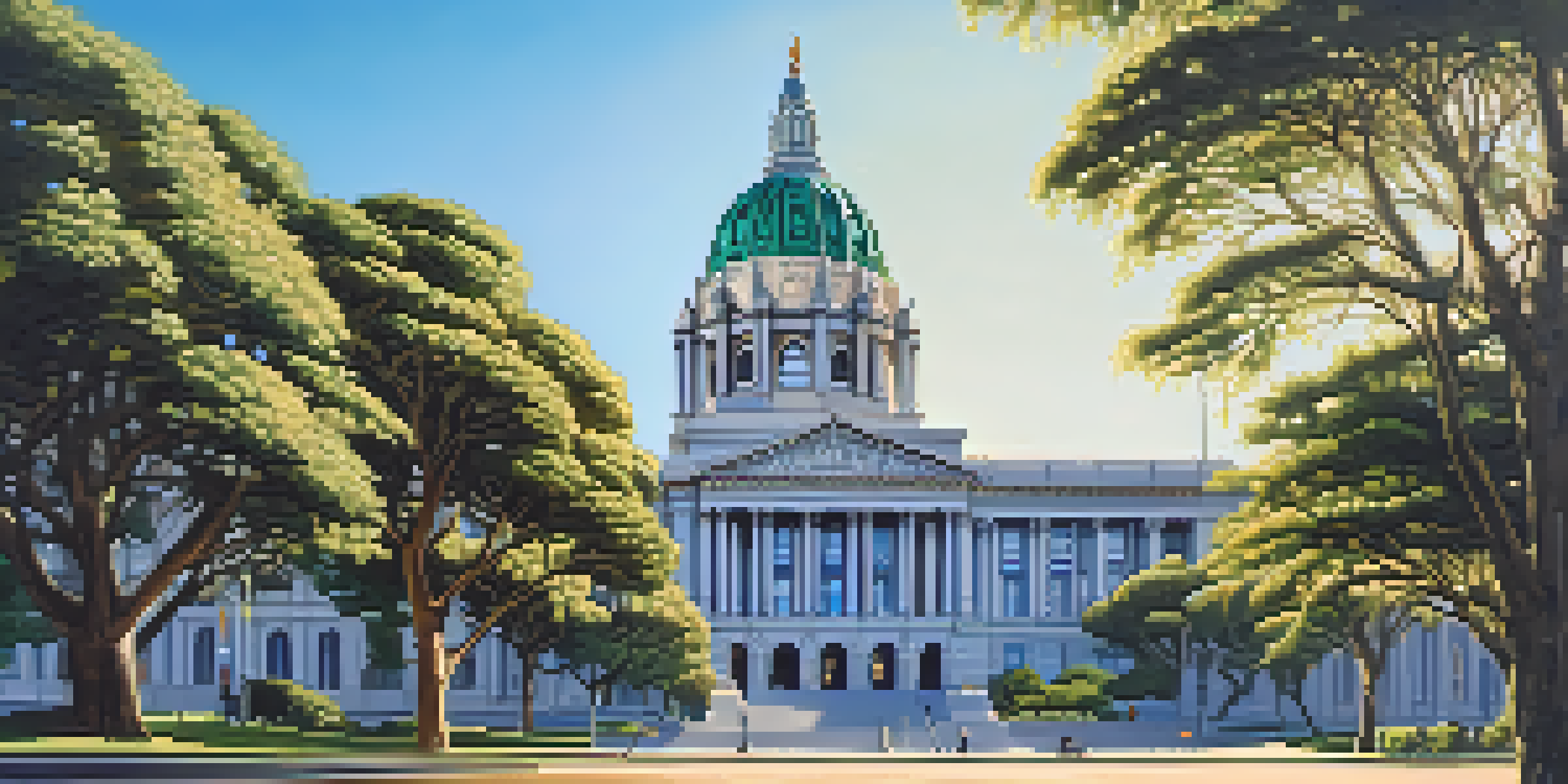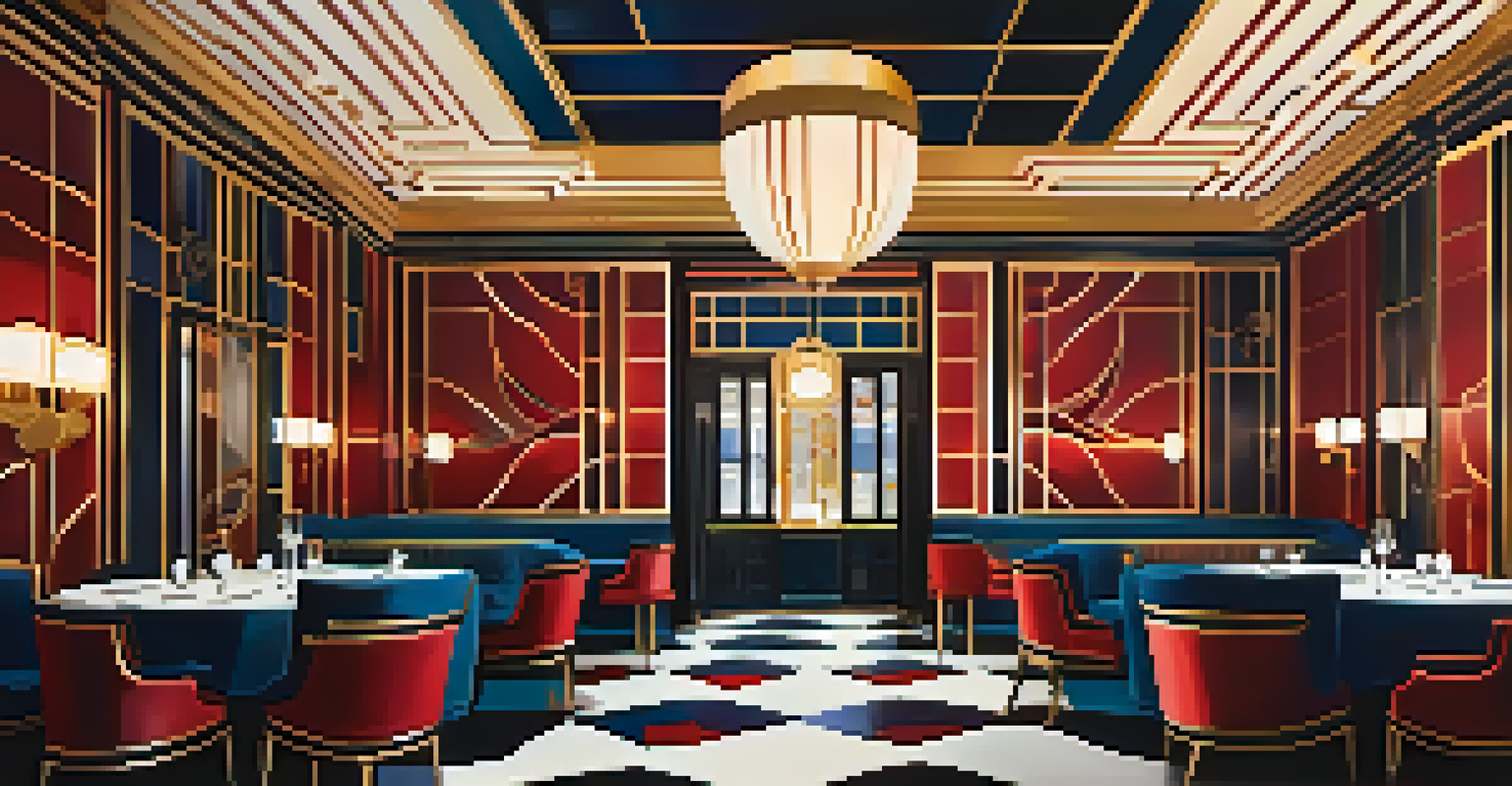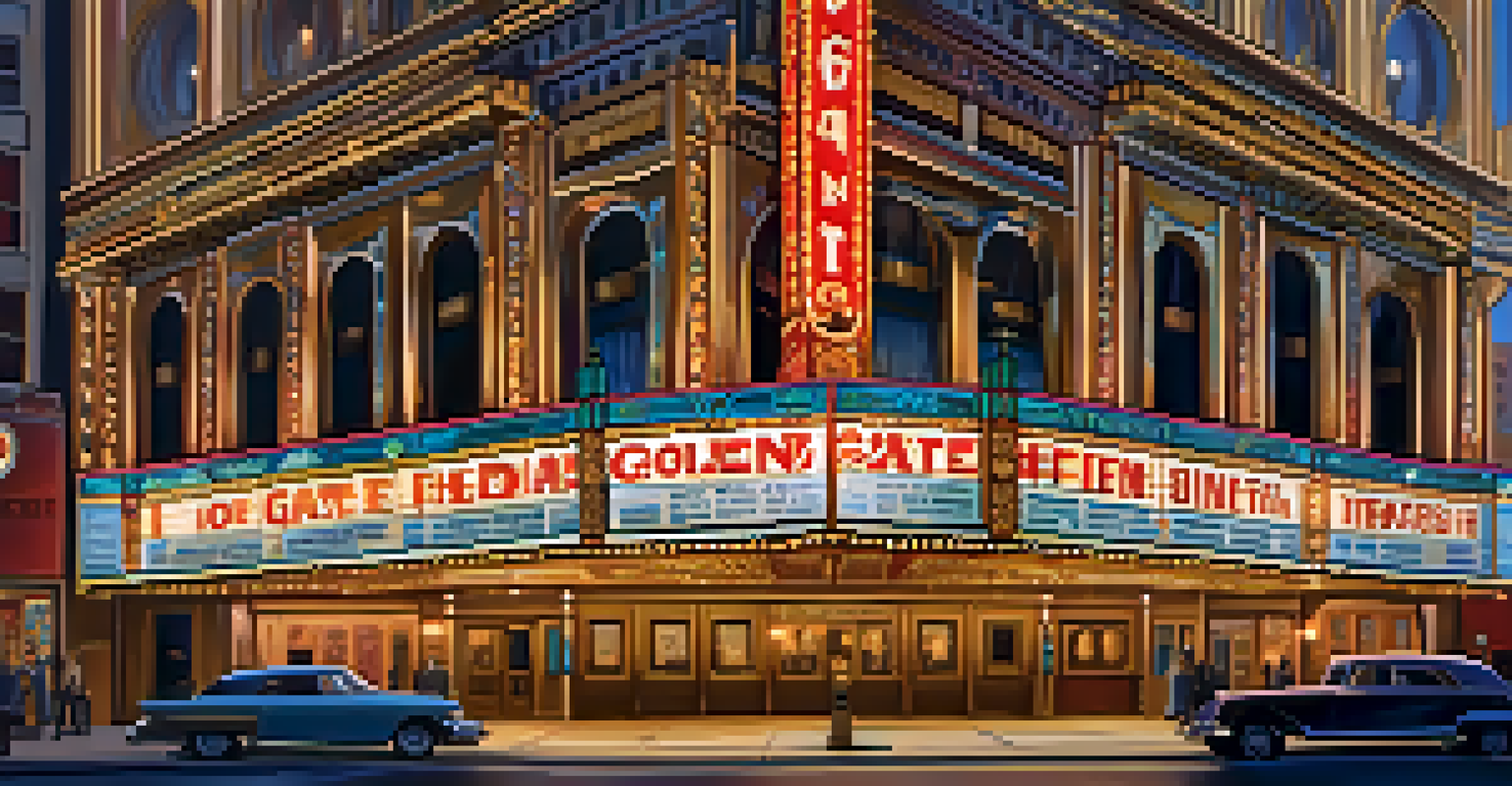Art Deco in San Francisco: A Glimpse into the Past

The Origins of Art Deco: A Brief Overview
Art Deco emerged in the early 20th century, characterized by its bold geometric shapes and lavish ornamentation. This vibrant design movement was a response to the more ornate styles that preceded it, such as Art Nouveau. It sought to embody modernity and luxury, making it a perfect fit for the rapidly evolving landscapes of cities like San Francisco.
Art Deco is a style that is at once modern and classic, a reflection of a time when society was ready to embrace the future.
In the context of the 1920s and 1930s, Art Deco reflected the optimism of the post-World War I era. As people sought to embrace change and progress, they turned to architecture and design that celebrated these ideals. San Francisco, with its unique cultural melting pot, became a canvas for this artistic expression.
As we delve deeper, it's essential to note how Art Deco not only influenced architecture but also impacted fashion, graphic design, and even film. The movement's rich visual language continues to resonate, making its mark on contemporary aesthetics.
Iconic Art Deco Structures in San Francisco
San Francisco boasts several stunning Art Deco buildings that showcase the style's distinctive features. One of the most notable is the iconic San Francisco City Hall, with its grand dome and intricate detailing. Completed in 1915, its design reflects both classical and Art Deco elements, embodying the city's historical significance and modern aspirations.

Another remarkable example is the Pacific Telephone Building, completed in 1930. Its bold facade and stylized motifs demonstrate the movement's emphasis on geometric shapes and streamlined forms. This structure stands as a testament to the city's growth during the early 20th century, as it became a hub for communication and commerce.
Art Deco's Rise in San Francisco
Art Deco emerged in the early 20th century, embodying modernity and luxury in the context of San Francisco's cultural evolution.
Additionally, the Golden Gate Theater, with its lavish interior and striking exterior, serves as a cultural landmark, drawing visitors into the world of cinema during the golden age of Hollywood. These buildings not only tell the story of Art Deco but also the story of San Francisco's evolution.
The Influence of Art Deco on San Francisco Culture
Art Deco's impact on San Francisco extends beyond mere architecture; it permeated the city's cultural fabric. During the Roaring Twenties, the movement influenced fashion, music, and visual arts, creating a vibrant artistic scene. Jazz clubs and theaters thrived, reflecting the era's excitement and energy, often adorned with Art Deco designs.
Architecture is the reaching out for the truth.
This stylistic influence can be seen in various neighborhoods, such as the Mission District and Nob Hill, where Art Deco elements are integrated into both residential and commercial spaces. These areas became cultural hotspots, showcasing the fusion of style and creativity that defined the city's identity during this period.
Moreover, Art Deco's legacy persists in modern San Francisco, where new buildings often pay homage to the past. The way contemporary architects incorporate these elements highlights a continuous appreciation for the elegance and sophistication of the Art Deco movement.
Preserving San Francisco's Art Deco Heritage
As with many historical styles, the preservation of Art Deco architecture is crucial for maintaining San Francisco's unique character. Organizations and local governments have come together to protect these structures, recognizing their cultural and historical value. Efforts include restoration projects and educational initiatives to raise awareness about the significance of these buildings.
Community engagement plays a vital role in preservation. Residents and enthusiasts often rally together to advocate for the protection of Art Deco sites, ensuring that future generations can appreciate this remarkable design movement. Walking tours and exhibitions further promote appreciation and understanding of the style's impact on the city.
Iconic Structures Reflecting Style
San Francisco features notable Art Deco buildings like City Hall and the Pacific Telephone Building, showcasing the movement's bold geometric designs.
However, challenges remain as urban development continues to reshape San Francisco's skyline. Balancing progress with preservation is essential, and ongoing dialogue about the importance of maintaining these historical landmarks is crucial for the city's identity.
Art Deco in San Francisco: A Global Perspective
While Art Deco flourished in various cities worldwide, San Francisco's interpretation adds a unique flavor to the movement. The city's location, cultural diversity, and historical context contributed to a distinctive blend of styles and influences. This fusion makes San Francisco a fascinating case study for understanding Art Deco's global impact.
Cities like New York and Miami are often celebrated for their Art Deco architecture, but San Francisco's contribution is equally significant. The city's structures reflect a combination of local materials, innovative designs, and a commitment to craftsmanship that sets them apart. This individuality enriches the narrative of the Art Deco movement as a whole.
By examining San Francisco's Art Deco heritage, we can appreciate how different regions adapted the style to reflect their unique identities. This global perspective highlights the interconnectedness of art and architecture across borders, reminding us that creativity knows no boundaries.
Modern Adaptations of Art Deco Design
In recent years, there has been a resurgence of interest in Art Deco-inspired design, particularly in San Francisco. Interior designers and architects are drawing on the elegance of the past, incorporating Art Deco elements into contemporary spaces. This blending of styles creates a unique aesthetic that resonates with both historical appreciation and modern sensibilities.
For instance, many restaurants and boutique hotels in the city feature Art Deco-inspired interiors, using bold colors, geometric patterns, and luxurious materials. This approach not only pays homage to the past but also creates immersive environments that attract a diverse clientele. Patrons are often enchanted by the timeless sophistication that Art Deco brings.
Preserving Cultural Heritage
Efforts to preserve Art Deco architecture in San Francisco highlight its historical significance and the community's commitment to maintaining the city's unique character.
Moreover, the revival of Art Deco in fashion and graphic design showcases its enduring appeal. From clothing lines to branding, the movement's iconic motifs are making a comeback, reflecting a broader trend of nostalgia for classic styles. San Francisco, with its creative spirit, continues to lead the way in reimagining these historical influences.
Visiting San Francisco's Art Deco Landmarks
When exploring San Francisco, visiting its Art Deco landmarks is a must for any architecture enthusiast. Many of these buildings are conveniently located near popular tourist attractions, making them easily accessible. Whether wandering through the historic streets or enjoying guided tours, visitors can immerse themselves in the city's rich architectural heritage.
Some notable stops include the Art Deco-inspired Fairmont Hotel, renowned for its opulent decor and stunning views of the city. The hotel embodies the elegance of the era, offering a glimpse into the luxurious lifestyle of the time. Another highlight is the War Memorial Opera House, whose exquisite details and grand scale captivate all who enter.

For those interested in a deeper understanding, guided tours focusing on Art Deco architecture are available. These tours often delve into the stories behind the buildings, revealing fascinating anecdotes and historical context. By experiencing these landmarks firsthand, visitors can appreciate the artistry and cultural significance of Art Deco in San Francisco.